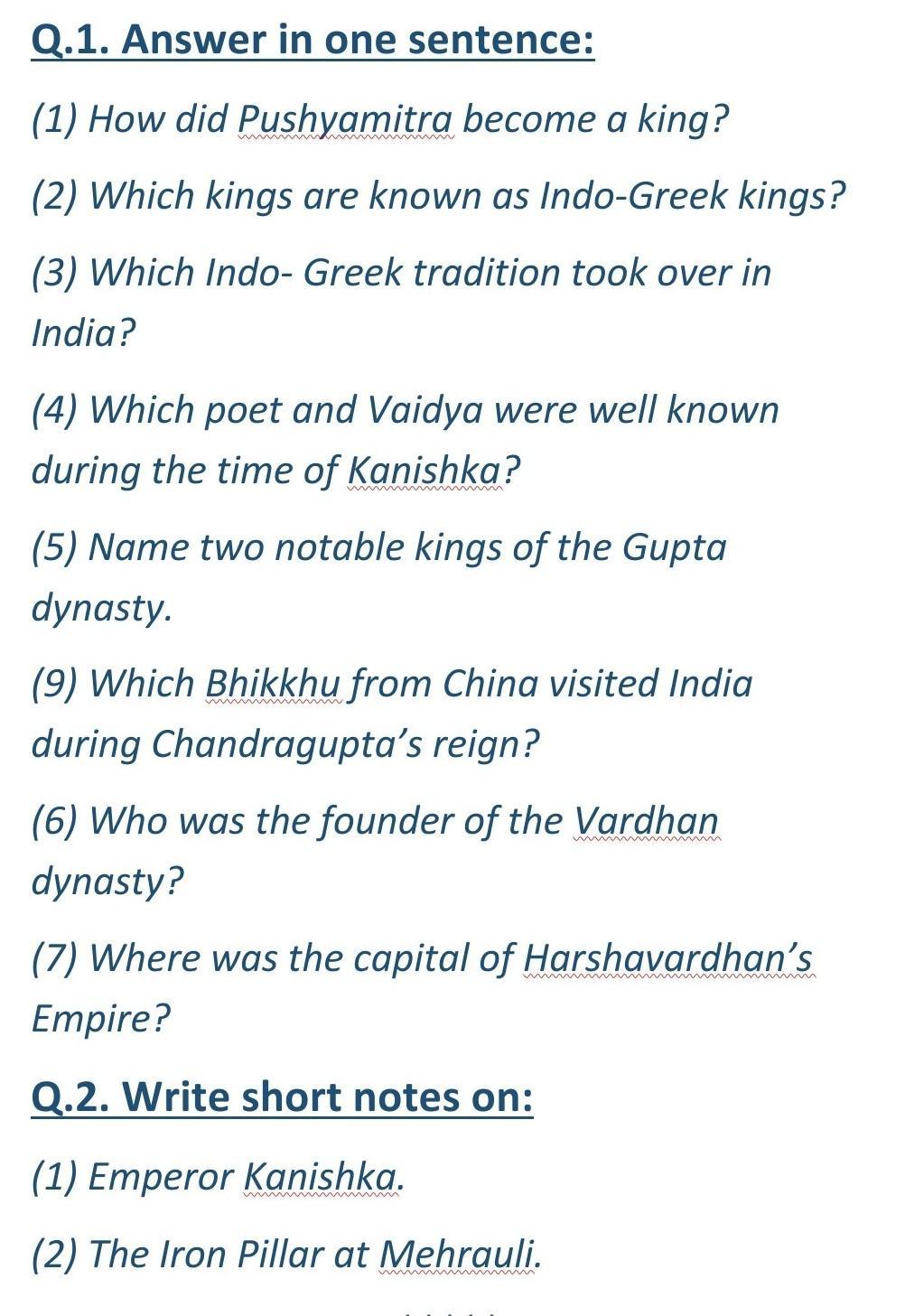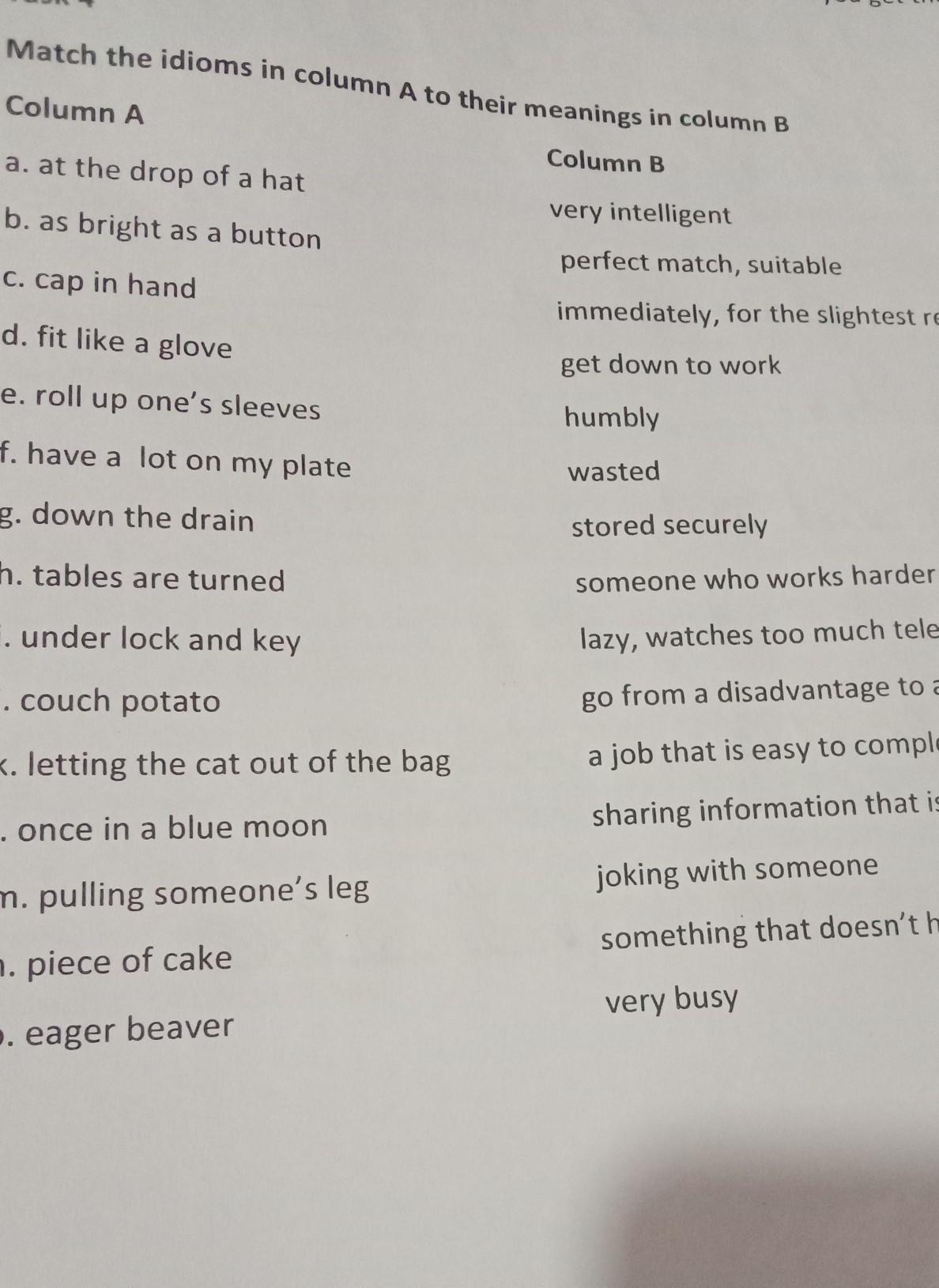Q1. According to the Puranas, Pushyamitra became the king after killing his master Brihadratha, the last Mauryan king.
Q2. The most famous Indo-Greek ruler was Menander (Milinda). He had his capital at Sakala in Punjab (present-day Sialkot).
Q3. The Indo-Greek had a tradition of putting the picture of the king on one side and that of a deity on the other of the coin. This tradition later took in India.
Q4. The well-known poet Ashvaghosh lived during the reign of Kanishka. He wrote the texts 'Buddhacharita' and 'Vajrasuchi'. The famous vaidya Charaka was also in Kanishka's court.
Q5. The ruling dynasty of the empire was founded by the king Sri Gupta; the most notable rulers of the dynasty were Samudragupta and Chandragupta II.
Q6. Faxian, Wade-Giles romanization Fa-hsien, original name Sehi, (flourished 399–414), Buddhist monk whose pilgrimage to India in 402 initiated Sino-Indian relations and whose writings give important information about early Buddhism.
Q7. Prabhakar Vardhana
Q8. Kannauj
1. Kanishka I, or Kanishka the Great, was an emperor of the Kushan dynasty, under whose reign the empire reached its zenith. He is famous for his military, political, and spiritual achievements.
2. The iron pillar of Delhi is a structure 23 feet 8 inches high with a 16-inch diameter that was constructed by Chandragupta II, and now stands in the Qutb complex at Mehrauli in Delhi, India. It is famous for the rust-resistant composition of the metals used in its construction.


